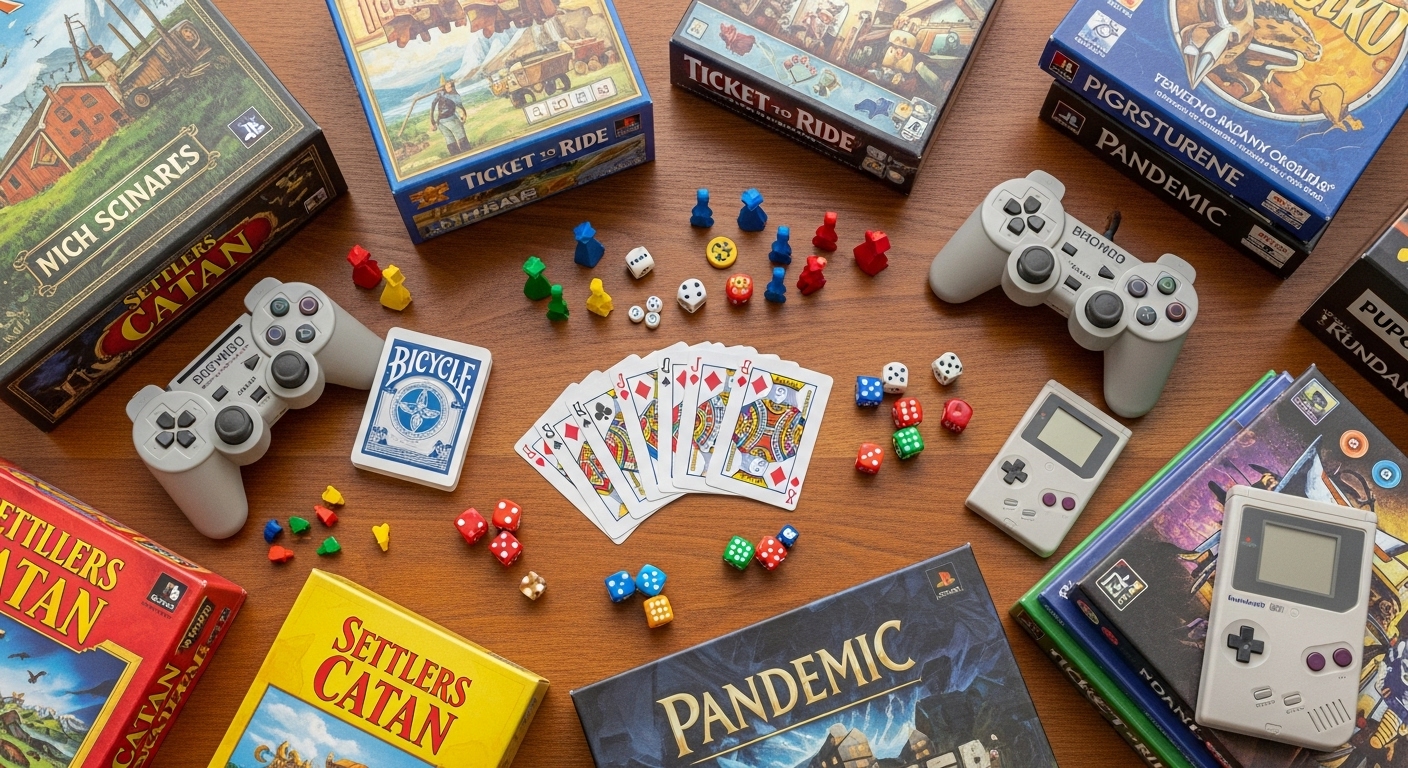Introduction: The Growth and Transformation of Gaming
Gaming has come a long way from its humble beginnings, where pixels and simple mechanics defined the gaming experience. Today, the gaming industry is a multibillion-dollar global phenomenon that spans various genres, platforms, and technologies. With constant advancements in graphics, storytelling, and gameplay mechanics, video games have evolved into a form of entertainment that appeals to all ages. Whether it’s casual mobile gaming, intense esports competitions, or rich story-driven adventures, gaming is now more immersive and accessible than ever. In this blog post, we will explore the major trends shaping the world of gaming, from technological innovations to the thriving gaming communities that make the experience so much more than just playing a game.
The Rise of Virtual and Augmented Reality in Gaming
Virtual Reality (VR) and Augmented Reality (AR) have opened new dimensions in the gaming world, offering immersive experiences that were once confined to science fiction. While VR places players in a fully immersive environment, AR overlays digital elements onto the real world, providing a hybrid experience that combines physical and virtual elements.
In VR, players use headsets and motion controllers to interact with a game environment in a 360-degree space. This technology has gained traction in both gaming and training simulations, offering players an entirely new level of interactivity and presence. Games like Half-Life: Alyx and Beat Saber have showcased the potential of VR gaming, drawing players into rich, interactive worlds where they can physically move and interact with their surroundings.
AR, on the other hand, took the world by storm with games like Pokémon GO, which allowed players to catch virtual creatures in the real world through their mobile devices. AR creates a more seamless integration between gaming and daily life, allowing for gaming experiences that don’t require dedicated hardware like VR but still offer a level of interactivity and immersion that is changing how we engage with games.
The Explosion of Mobile Gaming: Accessibility and Convenience
Mobile gaming has seen explosive growth in recent years, and it’s now one of the most popular forms of gaming worldwide. Thanks to the ubiquity of smartphones and tablets, mobile games are accessible to virtually everyone, whether they’re casual gamers looking for a quick distraction or dedicated players diving deep into complex titles.
Games like Candy Crush Saga, Clash of Clans, and PUBG Mobile have not only generated massive revenue but have also introduced new ways to play games, from microtransactions to battle passes. The ease of access and short play sessions have made mobile gaming a staple of modern life, especially for people on the go. The convenience of playing on a phone, combined with the increasing sophistication of mobile games, ensures that this trend will continue to dominate the gaming industry for years to come.
Moreover, mobile platforms have democratized game development, allowing indie developers to publish their titles easily and reach massive audiences. This accessibility has led to an explosion of creative, innovative games, ranging from simple puzzle games to complex multiplayer experiences. The shift to mobile gaming has also encouraged cross-platform play, where players can seamlessly connect with others across various devices, including consoles and PCs.
The Evolution of Online Multiplayer and Esports
One of the most transformative shifts in the gaming world has been the rise of online multiplayer experiences. Once, gaming was largely a solitary pursuit or limited to local co-op. Now, many of the most popular games are built around online multiplayer experiences, allowing players to team up or compete against others around the world.
Games like Fortnite, Apex Legends, and Call of Duty: Warzone have brought the battle royale genre into the mainstream, offering fast-paced, large-scale multiplayer action with players from different regions. The focus on team-based gameplay and constant updates keeps these games fresh and engaging, creating communities that span continents.
Esports, competitive gaming at a professional level, has exploded in popularity, with tournaments offering millions of dollars in prize money and attracting millions of viewers. Professional players are now household names, and teams representing countries or organizations compete in high-stakes events. Titles like League of Legends, Overwatch, and Dota 2 have become staples of the esports world, and their influence is only growing. The rise of esports is not only a testament to the skill and dedication of gamers but also to the global appeal of gaming as a spectator sport.
Storytelling in Games: From Simple Plots to Cinematic Masterpieces
While early video games were largely focused on gameplay and mechanics, modern games place just as much emphasis on storytelling. The narrative-driven games of today offer deeply emotional experiences, engaging players with complex characters, moral dilemmas, and intricate plots. Titles like The Last of Us, Red Dead Redemption 2, and God of War have taken storytelling in gaming to new heights, blurring the lines between video games and cinema.
These games feature rich narratives, high-quality voice acting, and cinematic visuals that rival those of blockbuster films. With the use of motion capture, advanced animation techniques, and exceptional writing, players now find themselves immersed in worlds with narratives as compelling and engaging as those in traditional media.
The power of storytelling in games lies in the interactivity they offer. Unlike a movie or a book, players actively influence the story’s outcome through their decisions and actions. Games like Mass Effect and Detroit: Become Human allow players to shape the story through dialogue choices, branching narratives, and even moral decisions, making each playthrough a unique experience.
The Role of Gaming Communities and Social Interaction
Gaming is no longer a solitary activity; it has become a social experience. Multiplayer games, online forums, streaming platforms, and social media have transformed gaming into a shared experience, where players can connect, collaborate, and compete with others from around the world.
Streaming services like Twitch and YouTube Gaming have allowed gamers to build massive audiences, creating a new wave of “celebrity” gamers who entertain, educate, and interact with fans in real-time. Gamers are no longer just players; they are content creators who influence trends, inspire others, and contribute to the broader gaming culture.
The social aspect of gaming is also evident in the formation of gaming clans, guilds, and teams. Whether it’s forming a squad in Fortnite or participating in a massive raid in World of Warcraft, these social structures foster collaboration, communication, and camaraderie among players. The rise of community events, fan conventions, and online tournaments also strengthens the bond between gamers and creates spaces for fans to celebrate their shared passion.
The Future of Gaming: What’s Next?
As technology continues to advance, the future of gaming looks incredibly promising. Innovations in artificial intelligence, cloud gaming, and next-generation consoles are likely to shape the next wave of gaming experiences. Cloud gaming, for example, allows players to stream games directly to their devices without the need for expensive hardware, potentially democratizing access to high-quality gaming experiences.
Virtual and augmented reality will likely continue to evolve, making games even more immersive and interactive. The integration of AI could lead to games that adapt dynamically to players’ actions, creating more personalized and unpredictable experiences.
As gaming becomes an even more significant part of mainstream entertainment, the industry will continue to push boundaries in both storytelling and gameplay. Whether through deeper narratives, more intricate gameplay mechanics, or greater social interactions, the future of gaming is poised to offer experiences we’ve only just begun to imagine.
Conclusion: Gaming as a Cultural Force
From humble beginnings to the global powerhouse it is today, gaming has proven itself to be more than just a pastime. It is a cultural force, driving innovation in technology, storytelling, and social interaction. With the continuous rise of new trends, technologies, and platforms, the future of gaming holds endless possibilities.
Gaming is no longer just about playing—it’s about experiencing, creating, and connecting with others. Whether you’re a casual player or a competitive gamer, the world of gaming is a vibrant and ever-changing landscape that continues to push the limits of what entertainment can be.




